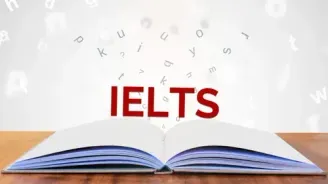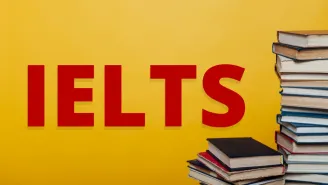Cleaner Abundant Reading Answer Passage
Cleaner Abundant Reading Answer Passage
Paragraph A. For many years, the crop circle phenomenon has perplexed and confused humanity. The drawings emerge out of nowhere, meticulously arranged among fields of food grains. Some are the size of football fields and are extremely difficult to design and construct. Others are more rudimentary and smaller. Crop circles are what we call them, yet most of them aren't circular. Some are extended abstract designs, some mimic insects or other known forms, while still others are complex patterns made up of lines, circles, and other shapes. The majority appear overnight, while it has been claimed that a handful has appeared in broad daylight within a half-hour.
Paragraph B. Crop circles have been spotted all around the globe. In recent years, approximately 10,000 cases from various nations have been documented. In December of 1973, the first crop circles occurred in Australia. In a wheat field in Wokurna, a town southeast of Adelaide, a weird circular mark formed. In an adjacent outfield, seven swirled circles up to 14 feet in diameter appeared. An astonishing series of circles, varying in diameter from a few inches to a few feet, formed in a wheat field west of Melbourne in December 1989. A total of 90 crop circles were discovered.
Paragraph C. During the summer of 1980, the best-documented and greatest modern spread of crop circles began in southern England. By the end of 1988, 112 circles had been established. At the time, 305 circles had been reported worldwide, with a total of 305 by the end of 1989. In 1990, the total number of newly established circles surpassed 1,000. There were 200 to 300 circles reported in 1991. Crop circles have been discovered in over 30 nations, including Canada, the former Soviet Union, Japan, and the United States of America. The stalks around the rings stayed entirely erect in nine out of ten circles, while damaged stems flattened to the ground and swirled.
Paragraph D. Crop circles, over time, have become far more mathematically complicated. Multiple circles, bars, triangles, rings, and spurs were used in the patterns. There were also pictorial images. While on an early morning walk in the countryside, eyewitnesses reported seeing strange lights and hearing unidentified sounds. Later that day, a crop circle appeared. At the site of some crop circles, high-pitched warbling noises have been recorded. A peculiar glow or darker colouration has been spotted in the sky around a crop circle on multiple occasions. In several instances, the electrical power of small planes flying overhead has shut off suddenly. Interestingly, these energies do not appear to harm animals or insects.
Paragraph E. Crop circles have sparked a lot of interest among scientists, who have spent years studying them. They look for signs of human involvement in the circle-making process, examine the area for geographical anomalies, and compare the grain inside and outside the circles for differences. Many grain samples have been studied by Dr. W.C. Levengood of BLT Research in Cambridge, Massachusetts, who confirmed dramatic alterations at the cellular level of crop circle plants. Elongated cells and blown-out nodes are common. Seeds from circular plants often demonstrate accelerated growth and differ in appearance. Vortex-like energy seems to flatten the plants, though they continue to grow normally after the circle appears.
Paragraph F. Several researchers have also discovered soil and environmental anomalies within crop circle sites. Duke University's Micheal Corost identified short-lived radionuclides in the topsoil layer. A British government laboratory discovered lower nitrogen levels, a lower nematode population, and reduced water content in the soil. Other abnormalities include embedded magnetic particles, burnt plant tissues, and stalks that appear to have been rapidly heated by microwaves. Some scientists have tried to explain crop circles through natural phenomena.
Paragraph G. The widely accepted 'Plasma Vortex Notion,' proposed by Dr. Terence Mearden, suggests that electrified air forms micro tornados that create the circles. This theory also explains the lights reported above crop circles. However, this theory has been questioned due to the increasingly elaborate crop circle patterns seen since 1991. Another theory claims all crop circles are hoaxes, but this seems unlikely, as many circles appeared long before the phenomenon gained public attention and often reveal complex mathematical patterns upon investigation.
Let’s explore the questions and answers of the Cleaner Abundant Reading passage.
Cleaner Abundant Reading Answers with Sample Questions
Have you read the passage? Now, take the test and find Cleaner Abundant Reading answers! Try to answer these questions by yourself before you sneak a peek at the answers given below.
Check Out Top 50+ IELTS Reading Practice Test Questions with Answers
Below are some top 50+ free IELTS Reading Practice test online questions with detailed answers to enhance your IELTS preparation online. We have provided sample passages for each test type for your reference.
- What Is Exploration Reading Answers
- Effects Of Noise Reading Answers
- The Discovery Of Baby Mammoth Reading Answers
- The Dead Sea Scrolls Reading Answers
- The Ring-Tailed Lemur Reading Answers
- Why We Need To Protect Polar Bears Reading Answers
- Nutmeg A Valuable Spice Reading Answers
- What Is Meaning Reading Answers
- Cutty Sark Reading Answers
- The Step Pyramid Of Djoser Reading Answers
- South Pole Adventurer Reading Answers
- The Future Of Work Reading Answers
- Ambergris Reading Answers
- Trees In Trouble Reading Answers
- Could Urban Engineers Learn From Dance Reading Answers
- The Flavour Of Pleasure Reading Answers
- The Value Of A College Degree Reading Answers
- Why You Should Delegate Tasks To Team Members Reading Answers
- Corporate Social Responsibility Reading Answers
- Forest Management In Pennsylvania USA Reading Answers
- Making Time For Science Reading Answers
- The Power Of Play Reading Answers
- Coastal Archaeology Of Britain Reading Answers
- How The Other Half Thinks Reading Answers
- Changes In Reading Habits Reading Answers
- The Forgotten Forest Reading Answers
- When Conversations Flow Reading Answers
- Attitudes Towards Artificial Intelligence Reading Answers
- The Ingenuity Gap Reading Answers
- A Bar At The Folies Reading Answers
- Booking A Wessex Cottages Holiday Reading Answers
- Sunset Tours Reading Answers
- Bird Migration Reading Answers
- Clutter Bugs Beware Reading Answers
- The Hidden Histories Of Exploration Exhibition Reading Answers
- Calisthenics Reading Answers
- Having A Lovely Time Reading Answers
- The Return Of Huarango Reading Answers
- Summer Activities At London Kew Gardens Reading Answers
- Computer Games For Preschoolers Reading Answers
- Extinct The Giant Deer Reading Answers
- Micro Enterprise Credit For Street Youth Reading Answers
- Plain English Campaign Reading Answers
- Glow Worms Reading Answers
- How To Prepare For An Interview Reading Answers
- Quiet Roads Ahead Reading Answers
- Sculpture Reading Answers
- Cornwall Reading Answers
- Latchkey Children Reading Answers
- Healthy Intentions Reading Answers
- Makete Integrated Rural Transport Project Reading Answers
- Allergy Testing Reading Answers
- Life Casting And Art Reading Answers
- Metropolis Movies Reading Answers
- The Bridge That Swayed Reading Answers
- The Discovery Of Uranus Reading Answers
- The Extraordinary Watkin Tench Reading Answers
- The Secret Schizoid Reading Answers
- The Sun A Mixed Blessing Reading Answers
- UK Companies Need More Effective Boards Of Directors Reading Answers
- Why Does Skin Wrinkle In Water Reading Answers







